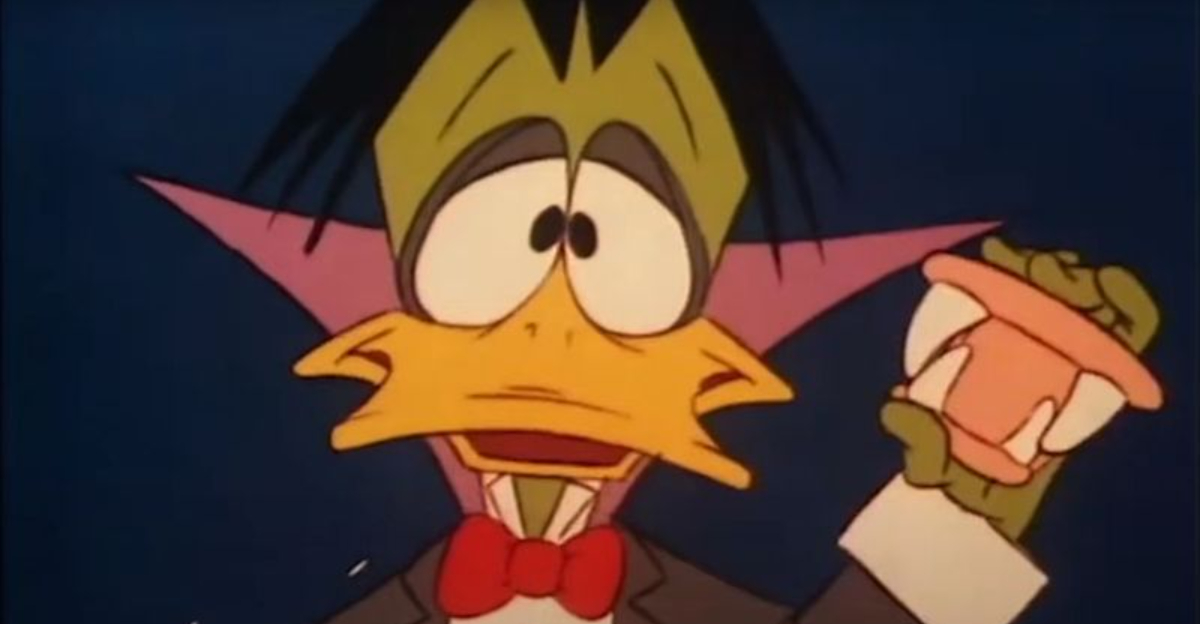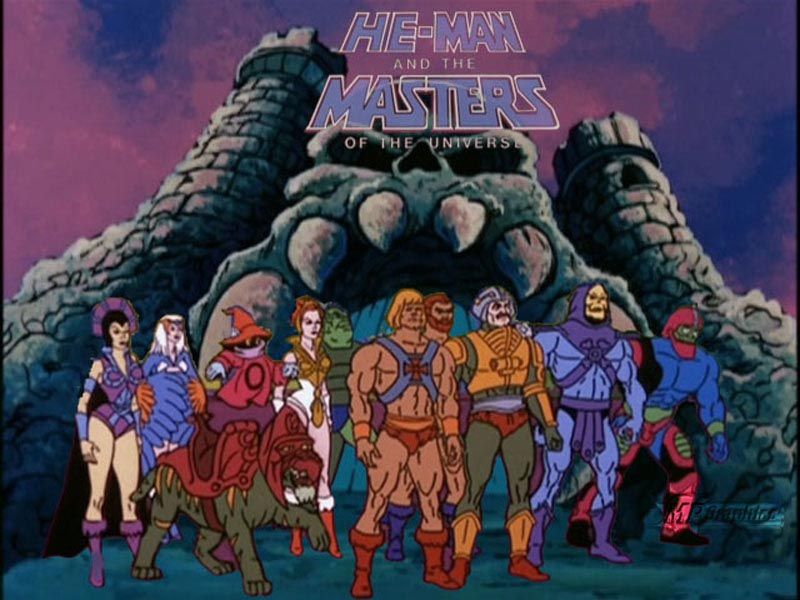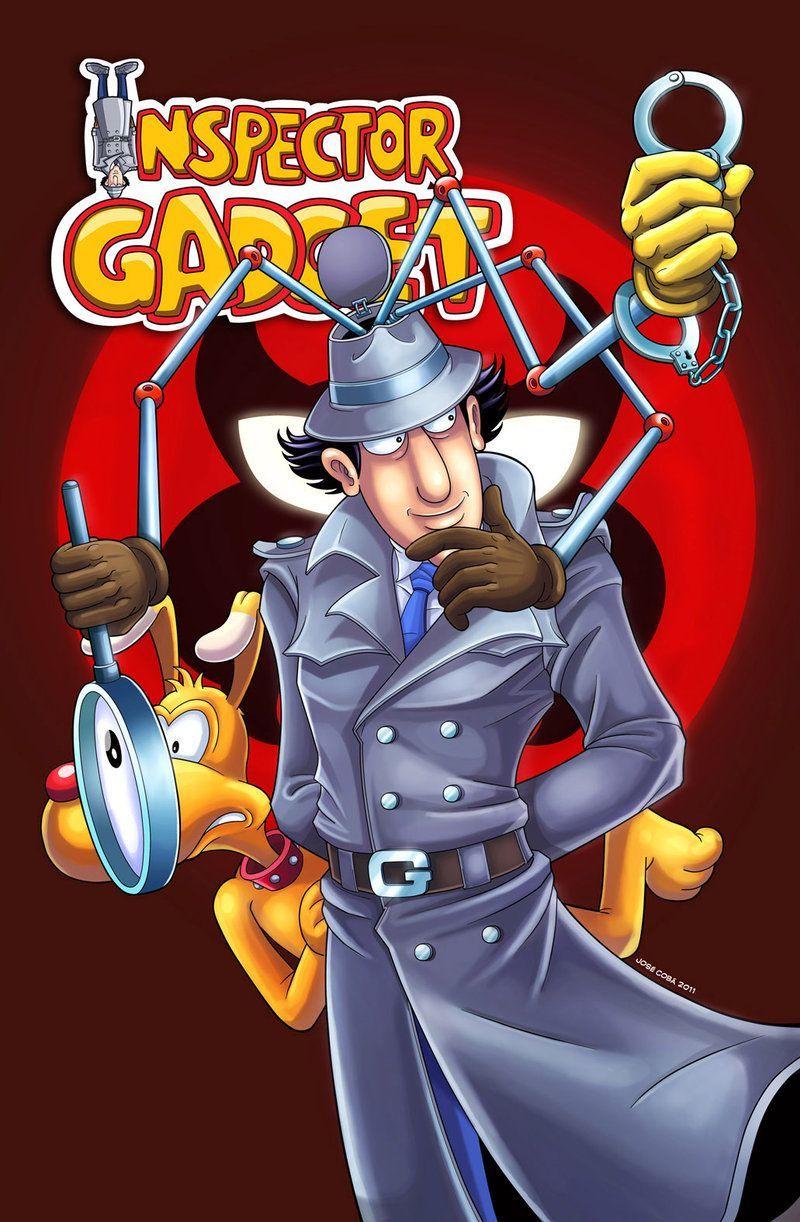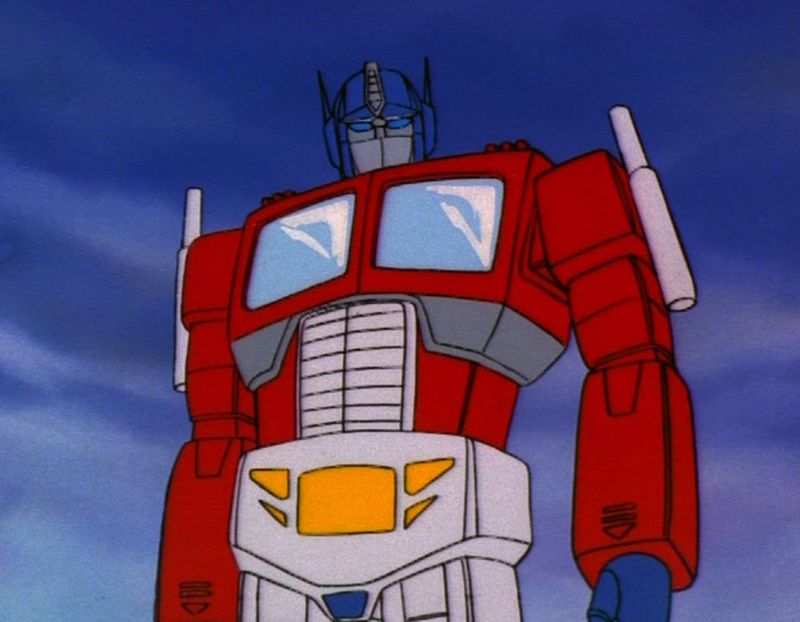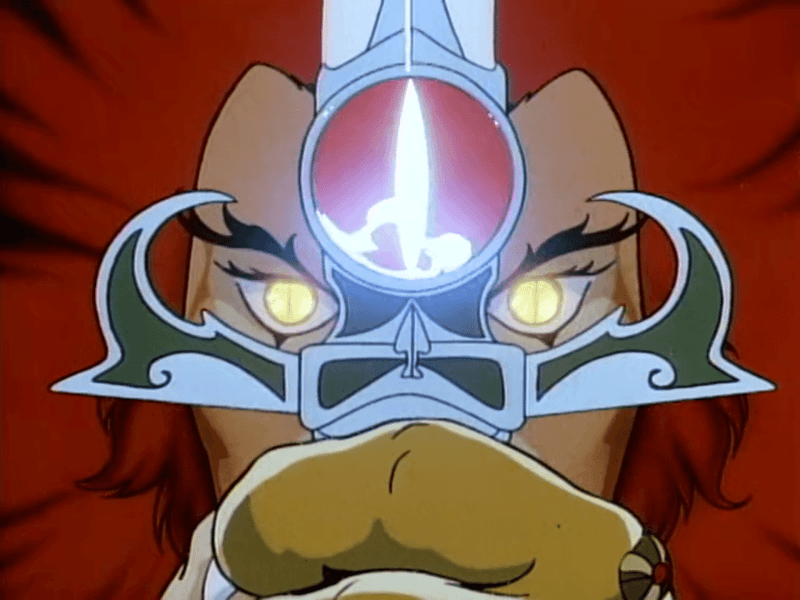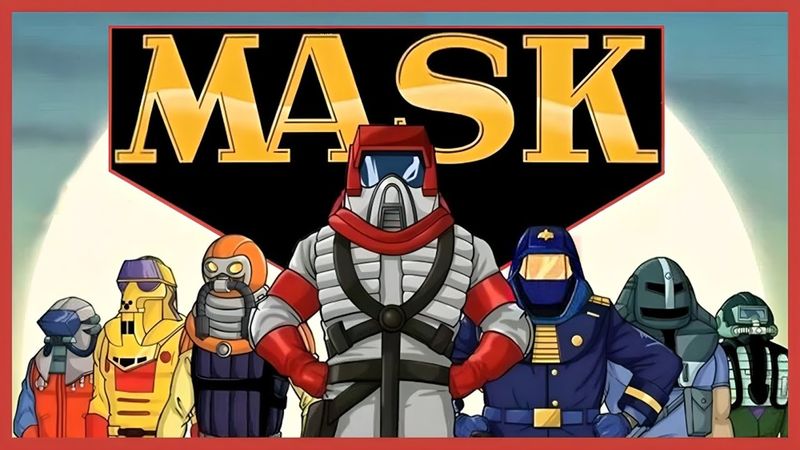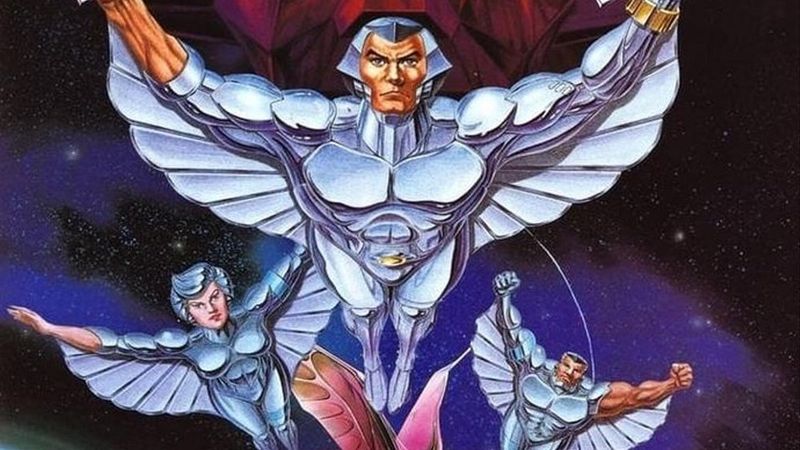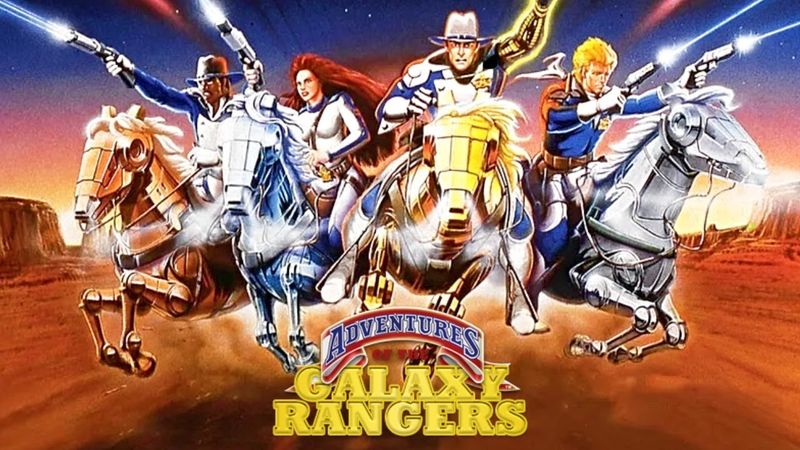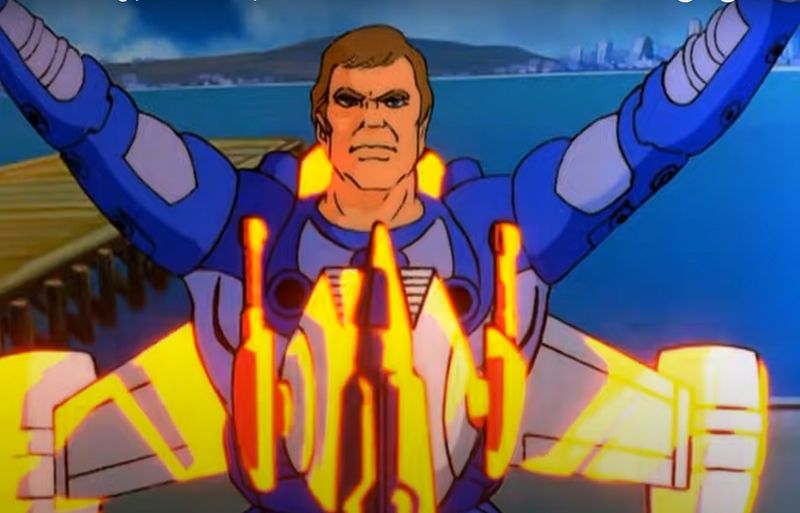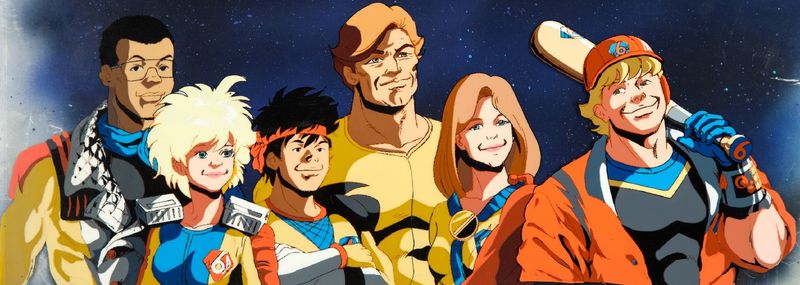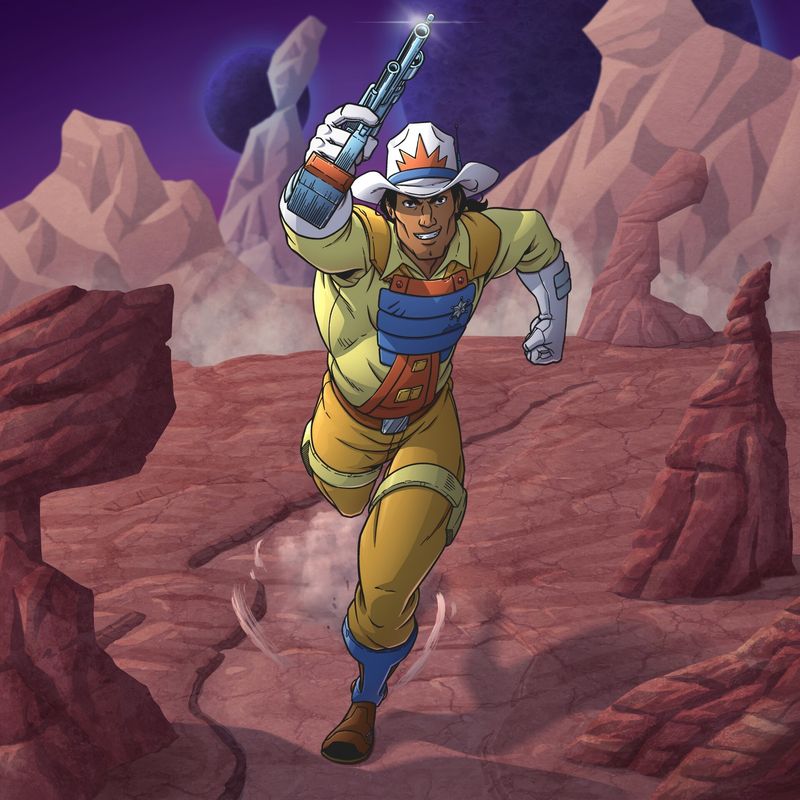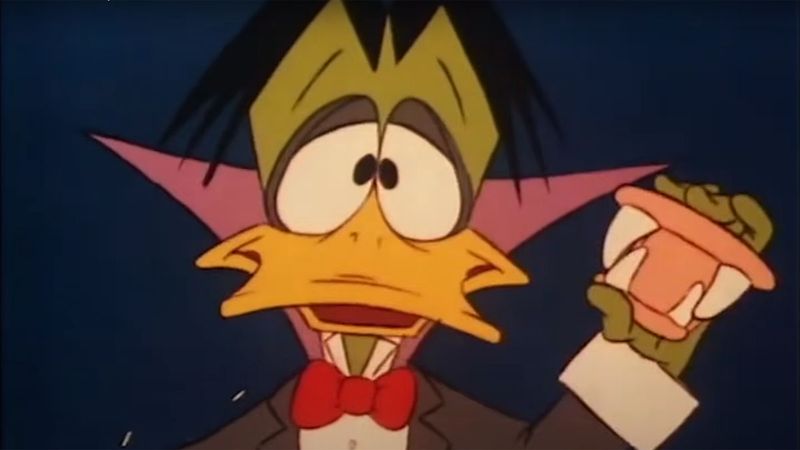The 1980s were the golden age of animated shows, filling our Saturday mornings with colorful heroes, talking animals, and toy-selling adventures.
But memory plays tricks on us – many beloved classics weren’t exactly as we remember them.
Meanwhile, dozens of brilliant cartoons from that era have faded into obscurity despite their creative concepts and unique charm. Ready for a nostalgic trip that might surprise you?
1. He-Man and the Masters of the Universe (1983)
Sword-wielding hero with the power of Grayskull? Check. Epic battles against Skeletor? Not exactly as you recall.
The show relied heavily on recycled animation sequences and formulaic plots that followed strict patterns. Most episodes ended with awkward moral lessons delivered directly to the camera – something fans conveniently forget.
For all its muscled posturing, He-Man rarely used his sword for anything beyond transformation. The violence was toned down to appease parents’ groups, resulting in battles where characters mostly pushed each other around or got trapped rather than engaging in the epic combat we think we remember.
2. Inspector Gadget (1983)
Bumbling cyborg detective with extendable limbs and gadget-filled hat – surely he solved all those cases himself, right? Wrong!
The show’s real heroes were his brilliant niece Penny and their loyal dog Brain. These two did all the actual detective work while Gadget stumbled through each episode accidentally foiling Dr. Claw’s plans.
Penny was a tech genius decades before coding became cool, using her computer book and watch to hack into systems and gather evidence. Meanwhile, poor Brain suffered countless mishaps protecting the oblivious Gadget, who inevitably took credit for solving each case despite being completely clueless throughout.
3. The Transformers (1984)
Giant robots that transform into vehicles battling across Earth and space! The epic saga of Autobots versus Decepticons captivated millions, but there’s more to this story than meets the eye.
Hasbro created the show primarily as a vehicle to sell toys. New characters appeared and disappeared with suspicious regularity, coinciding perfectly with toy release schedules. Remember Wheeljack, one of the main Autobots in season one? He virtually vanished later to make room for newer toy-ready characters.
The animation quality varied wildly between episodes, with noticeable errors like characters changing colors mid-scene or appearing in places they couldn’t possibly be. Still loved it though!
4. Thundercats (1985)
Lion-O and his feline warriors battling the evil Mumm-Ra on Third Earth seemed like Shakespeare compared to other cartoons. The sleek animation and dramatic storylines left lasting impressions on ’80s kids.
Reality check: the plots were often paper-thin and repetitive. Most episodes followed the same formula: Mumm-Ra disguises himself, Thundercats fall for it, Lion-O uses the Sword of Omens’ “sight beyond sight,” and saves the day.
The show frequently introduced concepts or characters that disappeared without explanation. Remember the other survivors from Thundera mentioned in early episodes? Neither did the writers, apparently. That theme song though – still absolutely legendary!
5. G.I. Joe: A Real American Hero (1983)
Military heroes battling the terrorist organization Cobra in realistic combat scenarios – except nothing about it was actually realistic!
Despite being centered around an elite military unit, nobody ever got seriously injured. Pilots ejected from exploding aircraft with perfect timing, and laser beams mysteriously always missed their targets. Vehicles exploded dramatically while drivers escaped unscathed.
The famous PSAs ending with “And knowing is half the battle” have become more culturally significant than the show itself. These safety tips about strangers and electricity overshadowed the main plots for many viewers. Meanwhile, Cobra Commander’s plans grew increasingly absurd, from weather-controlling machines to mind-swapping devices.
1. M.A.S.K. (1985)
Masked crusaders driving transforming vehicles combining the best elements of Transformers and G.I. Joe? M.A.S.K. (Mobile Armored Strike Kommand) deserved way more recognition than it got.
Matt Trakker led his team against the criminal organization V.E.N.O.M., with both sides using special masks granting unique powers. The Thunderhawk – a Camaro that transformed into a jet – remains one of the coolest toy concepts ever.
Unlike many shows of the era, M.A.S.K. featured civilian vehicles that transformed rather than robots, giving it a unique espionage feel. The theme song’s rallying cry of “M.A.S.K. crusaders working overtime, fighting crime!” deserves to be remembered alongside the decade’s more famous cartoon anthems.
2. SilverHawks (1986)
“Partly metal, partly real” space-faring heroes with metallic bodies and wings patrolling the galaxy in the 29th century. Created by the same studio behind ThunderCats, SilverHawks deserved the same level of fame.
Commander Stargazer recruited a team of humans transformed into cyborg bird-people to battle the planet-hopping mob boss Mon*Star. The show featured gorgeous space backgrounds and unique character designs that still look impressive today.
Guitarist Bluegrass piloted the team’s ship while playing cosmic country music on his laser guitar. Seriously! The villains were equally creative – a squid-like armored gangster named Hardware and a shapeshifting alien called Mo-Lec-U-Lar. How did this not become as big as He-Man?
3. Visionaries: Knights of the Magical Light (1987)
Magic returns to a technological world after all machines stop working! Visionaries brilliantly combined medieval concepts with post-apocalyptic science fiction in ways no other cartoon dared.
Two factions – the Spectral Knights and Darkling Lords – wielded staffs containing magical animal totems they could transform into. Their armor featured holographic images representing personal animal spirits. The toy line’s holograms were revolutionary for the time.
Despite lasting only 13 episodes, the show explored complex themes about the balance between technology and nature. The writing was surprisingly sophisticated, featuring magical quests and moral dilemmas that respected kids’ intelligence. A forgotten gem that was canceled far too soon.
4. Jem and the Holograms (1985)
Rock star secret identities, rival bands, romance, and computer-generated hologram technology wrapped in neon pink packaging. Jem wasn’t just “truly outrageous” – it was revolutionary.
Music executive Jerrica Benton used a holographic computer named Synergy to transform into rock star Jem, balancing fame with running a foster home for girls. Each episode featured original songs with full music videos – unheard of production value for the time.
The show tackled surprisingly mature themes including drug abuse, illiteracy, and poverty. Female characters drove every aspect of the plot instead of being sidekicks or love interests. Jem laid groundwork for empowering girls’ entertainment decades before it became mainstream.
5. The Adventures of the Galaxy Rangers (1986)
Space western with cybernetically enhanced lawmen? Galaxy Rangers blended frontier justice with sci-fi in ways Star Wars only dreamed about.
The Rangers protected colonists on the new frontier of space using experimental “Series 5 implants” granting them special abilities. The animation featured rotoscoping techniques that made action sequences extraordinarily fluid compared to competitors.
Unlike most cartoons of the era, Galaxy Rangers maintained ongoing storylines and character development across episodes. The show’s mature tone included actual casualties and moral complexity rarely seen in children’s programming. Its haunting theme song, composed by the Brothers Wise who later worked on Beauty and the Beast, perfectly captured the frontier spirit.
6. Dinosaucers (1987)
Intelligent dinosaurs from another planet bringing their conflict to Earth and befriending human teenagers. How is this concept not still producing sequels today?
The heroic Dinosaucers, led by Allo (an allosaurus), battled the evil Tyrannos, led by Genghis Rex. Both sides could transform from dinosaur to humanoid form using “Dinovolving” technology. The human “Secret Scouts” helped the good dinos adapt to Earth culture.
Unlike many shows, Dinosaucers relied more on comedy and clever solutions than violence. The villains were comically incompetent rather than threatening, making this perfect for younger viewers. The educational elements about actual dinosaur species snuck in real paleontology knowledge between the laser battles and spaceship chases.
7. The Centurions (1986)
“Power Xtreme!” Three specialists in land, sea, and air combat wearing exo-frames that could instantly teleport modular weapon systems onto their bodies. Pure ’80s action brilliance!
Max Ray (sea operations), Jake Rockwell (land operations), and Ace McCloud (air operations) fought against the cyborg scientist Doc Terror and his plans for world domination. Crystal Kane coordinated missions from their orbital space station, Skyvault.
Each episode showcased different weapon systems that, coincidentally, matched available toys perfectly. The animation quality surpassed many contemporaries, with detailed mechanical designs and exciting action sequences. The concept of specialized tactical experts combining different technologies remains relevant in today’s superhero team-ups.
8. Bionic Six (1987)
A multiracial family of six gains bionic powers after an accident and becomes Earth’s defenders. Progressive doesn’t begin to describe this forward-thinking series.
Professor Sharp saved the Bennett family after a skiing accident by enhancing them with bionics. The family included adopted and biological children of different ethnicities – groundbreaking representation for 1987. Each member had unique abilities activated by the phrase “Bionics On!”
The show tackled sophisticated storylines including environmental protection and family dynamics. The main villain, Dr. Scarab, was Professor Sharp’s brother, adding personal stakes to their conflicts. The animation featured a distinctive style influenced by Japanese anime that stood out from typical American cartoons.
9. Spiral Zone (1987)
Half the world’s population trapped in mind-controlling zones created by a rogue scientist – this wasn’t your typical cheerful ’80s cartoon. Spiral Zone ventured into dystopian territory rarely seen in children’s programming.
The Black Widows, soldiers wearing protective suits, fought against the Zone Riders trying to free humanity from the zones. People caught in these areas became “Zoners” with yellow-tinged skin and blank eyes – nightmare fuel for young viewers.
The animation featured a realistic military aesthetic with detailed vehicles and weapons. Characters faced genuine danger, with some episodes ending without clear resolution. French comic artist Moebius influenced the visual style, giving the show a European graphic novel feel unlike anything else on Saturday mornings.
10. BraveStarr (1987)
A Native American marshal with animal-based powers policing the frontier planet of New Texas. BraveStarr boldly incorporated indigenous heritage into a space western setting.
Marshal BraveStarr could call upon the powers of spirit animals – “Eyes of the Hawk, Ears of the Wolf, Strength of the Bear, Speed of the Puma.” His deputy was a talking horse named Thirty/Thirty who transformed into a bipedal form and wielded a massive blaster called Sara Jane.
The show tackled serious issues including racism, drug addiction (via the episode “The Price”), and environmental conservation. These mature themes appeared alongside the expected action sequences and humor. Filmation’s final animated series deserved much more recognition for its cultural representation and storytelling courage.
11. Turbo Teen (1984)
A teenager who transforms into a red sports car whenever he gets hot. Yes, you read that correctly, and it’s exactly as bizarre as it sounds.
Brett Matthews drove through a government lab during a storm, merging with his car at the molecular level. Afterward, heat caused him to become a car while cold temperatures returned him to human form. The transformation sequences were uncomfortably detailed, showing his face morphing into a headlight and hood.
Despite the outlandish premise, the show played it completely straight. Brett and his friends solved mysteries while evading a mechanic named Monster who wanted to capture the talking car. Lasting only 13 episodes, Turbo Teen represents the gloriously weird experimentation of ’80s animation that today’s risk-averse studios would never attempt.
12. Jayce and the Wheeled Warriors (1985)
A young man searching for his scientist father while battling plant-based mechanical monsters called the Monster Minds. The concept sounds ridiculous until you see the incredible vehicle designs.
Jayce led the Lightning League, a group of rebels with weaponized vehicles fighting against Saw Boss and his organic-mechanical Monster Minds. The plant-vehicles could sprout from spores, making them a constantly spreading threat across the galaxy.
The show never received a proper ending despite the ongoing quest for Jayce to find his father and unite the two halves of the “Root.” The unresolved storyline still frustrates fans decades later. The spectacular opening theme by Shuki Levy and Haim Saban (later of Power Rangers fame) remains one of the era’s most pulse-pounding cartoon intros.
13. The Wuzzles (1985)
Animals combined from two different species living in the magical Isle of Wuz. This Disney creation only lasted 13 episodes but left an outsized impression on young viewers.
Characters like Bumblelion (half bumblebee, half lion), Eleroo (elephant and kangaroo), and Rhinokey (rhino and monkey) navigated whimsical adventures with punny dialogue. The show’s premise allowed for creative character designs that translated perfectly into stuffed toys.
Tragically, the series ended abruptly following the death of voice actor Bill Scott (who played Moosel). It holds the distinction of being one of Disney’s first animated TV series produced specifically for Saturday morning, paving the way for the Disney Afternoon programming block that would dominate the next decade.
14. Inhumanoids (1986)
Massive monsters from Earth’s core battling scientists in mechanical suits. Inhumanoids pushed the boundaries of what was considered acceptable horror elements in children’s entertainment.
The Earth Corps scientists fought three terrifying creatures: Metlar (living magma), D’Compose (who could turn people into undead monsters), and Tendril (a plant monster). The heroes allied with benevolent monsters called the Mutores to save humanity.
The show featured genuinely frightening imagery, including decomposing bodies, possession, and body horror transformations. Episodes ran 15 minutes as part of “Super Sunday” with continuing storylines across multiple weeks. The toy line featured impressively large monster figures that towered over other action figures, perfectly capturing the show’s sense of scale and terror.
15. Count Duckula (1988)
A vegetarian vampire duck with a castle that teleports to different locations each full moon. British animation studio Cosgrove Hall created this horror-comedy masterpiece that balanced macabre themes with slapstick humor.
Count Duckula emerged when Igor performed a resurrection ritual but used ketchup instead of blood, creating a vampire who craved vegetables instead of blood. His bumbling butler Igor and housekeeper Nanny accompanied him on adventures across time and space.
The show’s British humor featured wordplay and cultural references that sailed over kids’ heads but delighted parents. David Jason’s voice performance as Duckula blended aristocratic airs with nervous energy. The gothic horror aesthetics introduced many children to the vampire genre through a less frightening, green-feathered intermediary.
